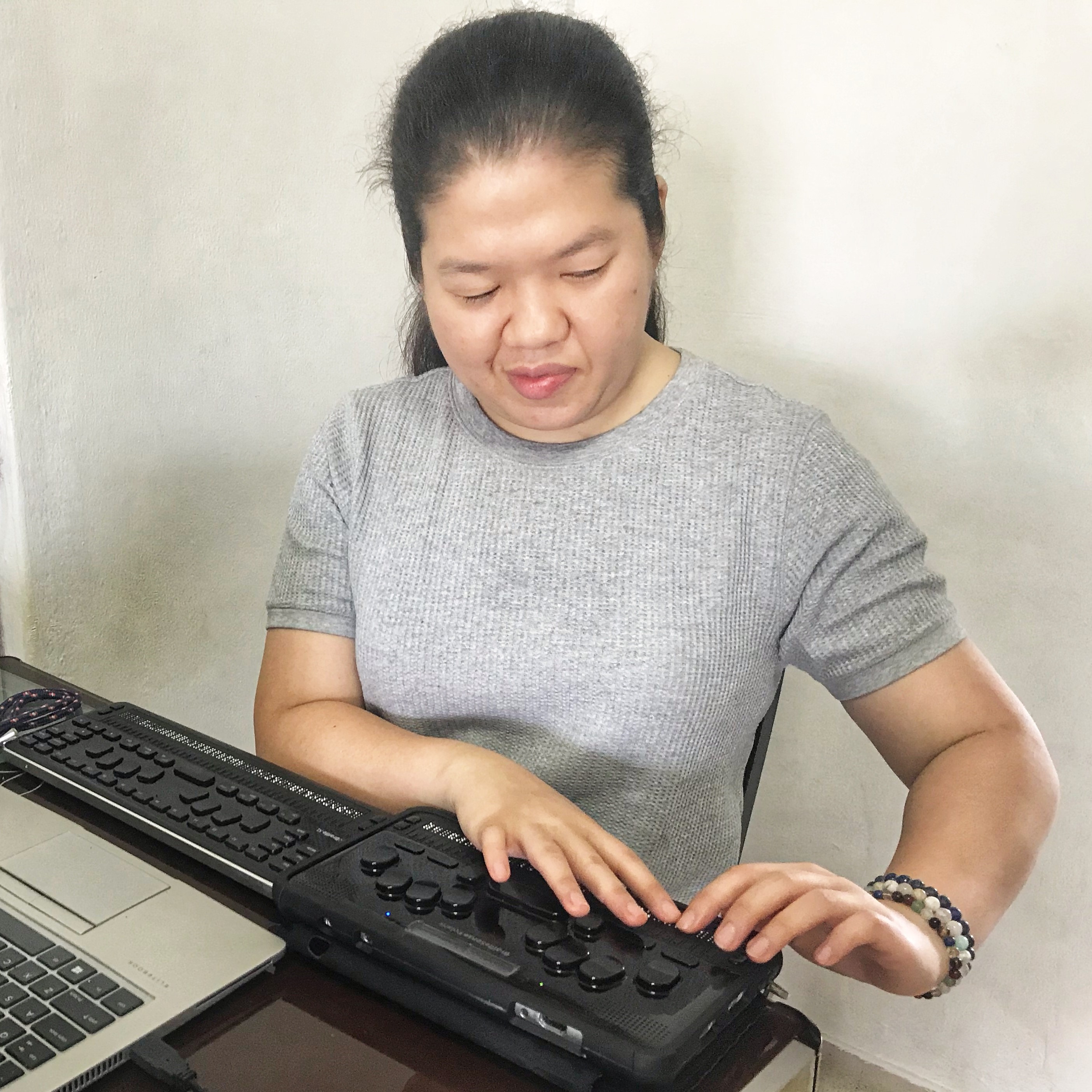October is AAC Awareness Month. Augmentative and alternative communication (AAC) is a set of tools and strategies that helps an individual solve everyday communicative challenges.
Communication is a two-way exchange, being able to express oneself and receive information.
In our daily activities, all of us actually use some forms of AAC - gestures, pointing, body language, facial expressions in place of speech, or even using a pen and paper to write someone a note!
I am also an AAC user, even though I do not use it all the time. I use my voice to express myself, but for me to receive information, I have to rely on various communication methods.
Some friends around me have picked up Manual tactile to communicate with me. They point to different parts of the palm, e.g. "A" is represented by pointing the thumb, "E" the index finger, or even “finger-write” alphabets to form words. This method can be helpful when the use of a high-tech device is not available. There are also haptics signals such as saying "Yes", "No", or laughing. For lengthy conversations, I will pass my Bluetooth keyboard to people around me, which connects to my smartphone. Their messages will then appear as braille on my braille display, which I carry with me everywhere. Another example is guiding me to touch the object like railings, so I know we are approaching stairs or escalators.
If I meet someone for the first time, there needs to be some explanation on how they can communicate with me. Most of the time, when I have a companion, he or she will convey spoken messages to me via my assistive device.

Siew Ling uses BrailleSense Polaris and BrailleSense QBraille to read messages.
It is not that difficult to communicate with persons who use an AAC. It helps if there is some patience and understanding and a willingness to learn how to use their communication tools to interact with them will certainly go a long way.
I hope, in the future, there are more affordable assistive devices, and there will be greater recognition and acceptance of these varied communicative methods.
Tan Siew Ling is fully Deafblind, having lost both her sight and hearing to a neurological condition, Neurofibromatosis type 2 (NF2). She carries a screen reader with a Braille display, which she fondly names it as “Bear Bear”, everywhere she goes. Her humour, wordplay, and love of puns keep friends on their toes. She enjoys reading books in her free time and loves to pen down her thoughts, often on a whim, which can be entertaining at times, on her social media. When she is not writing or reading, she can be seen doing insanely 72kg leg presses or swinging a 20kg kettlebell to and fro. You can find out more about Siew Ling and her journey here.